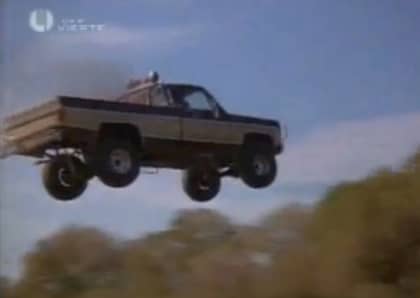The Dodge Power Wagon Pioneered Four-Wheel Drive America
World War II changed the auto industry forever, and not just because of the renewed industrial fervor that accompanied returning soldiers and the consumer demands linked to their lust for the way of life they had been overseas defending. On top of this, the conflict imported an entirely new class of vehicle - the four-wheel drive truck - which had previously been restricted almost entirely to low-volume commercial applications.

The desire for go-anywhere rigs that mimicked the capabilities of the vehicles that thousands of Americans had driven across Europe and through the Asian jungle would lay the groundwork for the 4x4 industry to come. It was only natural, then, that companies that had directly participated in the war effort would have a leg-up on the competition during these early days. It's here that Dodge found itself poised for success with its unique range of Power Wagon pickups, a model that would set the tone for both the rest of the industry and its own future truck plans.
Bigger Is Better
Unlike Willys, which was content to put the Jeep MB on-sale largely unchanged as the CJ, or 'Civilian Jeep,' Dodge had some decisions to make. The company had built hundreds of thousands of 'WC' trucks for the U.S. Army in the 1940s in a bewildering array of configurations, and couldn't simply put them all in a catalog and start churning them out for the domestic market.

Dodge's product team finally settled on a 126-inch wheelbase WC design that would be offered with a single, enclosed cab and an eight-foot box. Renamed the Power Wagon, it was a bit of a mutt, borrowing body panels from models the company had built before WW2 even started, grafted onto an upgraded one-ton chassis (replacing the war-spec 3/4 ton), and matched with an all-new, wood-floored bed. Like the Army editions, the Power Wagon's distinguishing feature was its utility: a four-wheel drive system, power take-offs front and rear, and a 100 horsepower, 230 cubic inch flathead-six engine (matched with a four-speed manual transmission) were standard with every model.

Power Wagons were quickly adopted by forest agencies, tow operations, fire departments, ambulance companies, and anyone who had the need to get a job done far from the beaten path. It's important to understand that in 1946, when the vehicle first went on sale, the idea of a four-wheel drive vehicle was still quite novel, let along one that made that feature standard from the factory. The Power Wagon quickly filled a niche that no other company was offering, especially considering that its 8,700 lbs gross vehicle weight rating put it a class above standard pickups of the era.
Stay The Course
Dodge would keep the Power Wagon chugging forward for the next 22 years, but during that time only a handful of changes would be made to the vehicle's original formula. As light-duty pickups began to gain four-wheel drive during the 1950s, interest in the Power Wagon would slow from the general public. The truck's appeal remained strong among specialty buyers who could appreciate its simple, sturdy construction and commercial-friendly capabilities.

Several 'generations' of Power Wagon would be offered past the original (which was produced for roughly six years), but the vehicle's evolution was modest. Most changes would amount to suspension tweaks, axle capacity upgrades, the addition of power steering, and alterations to the vehicle's bed. The electronic systems offered by the Dodge would be modernized (12-volt joined the party in 1955, just after a revised 230 cubic inch six-cylinder engine), and instrumentation and styling would also be tweaked. Dodge would rename the Power Wagon the W-300 in 1957, placing it at the pinnacle of its W-Series (four-wheel drive) pickup truck line, but aside from a final engine punch-out to 251 cubic inches, not much more would change between then and the vehicle's eventual discontinuation in 1968.
Almost, But Not Quite Immortal
The looming threat of EPA emissions regulations would finally convince Dodge that perhaps it was time to stop building its war hero and instead focus on developing its civilian truck line (although it would continue to export the truck for another decade to markets less concerned about atmospheric cleanliness). The company would confusingly use the Power Wagon name as a trim level on the W-Series truck throughout the 1970s, until it was replaced by the Ram for 1981. The name would then lie dormant until 2005, when it was revived as an off-road package for the 2500 series Dodge (later Ram) pickup, a model which is still sold today.

From a modern perspective the Power Wagon has enjoyed a renaissance not just from collectors but also builders who see the ultra-rugged platform as an appropriate canvas on which to paint with high-torque diesel engines, cutting edge off-road equipment, and a full range of comforts and conveniences that the Dodge's original designers could never have conceived of. Parts availability is strong, and the truck itself tends to wear with the same toughness one would expect from an overbuilt military model.
There's really nothing else like the Power Wagon, which feels almost like a Hot Wheels caricature of what a 4x4 pickup would look like—only this one's big enough for you to get in and drive.
Want another off-road option that's not a Jeep? We've got you covered.











